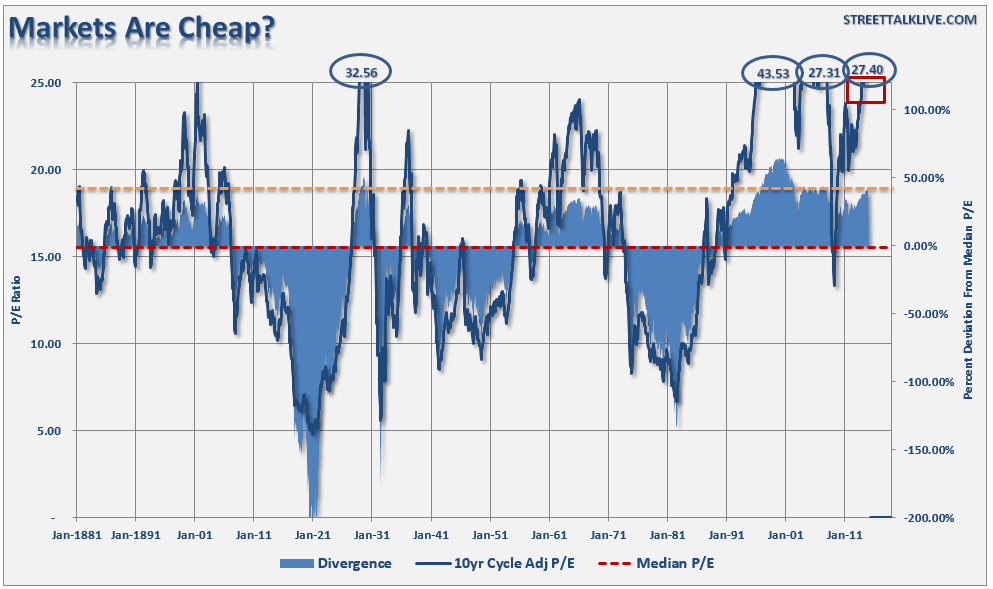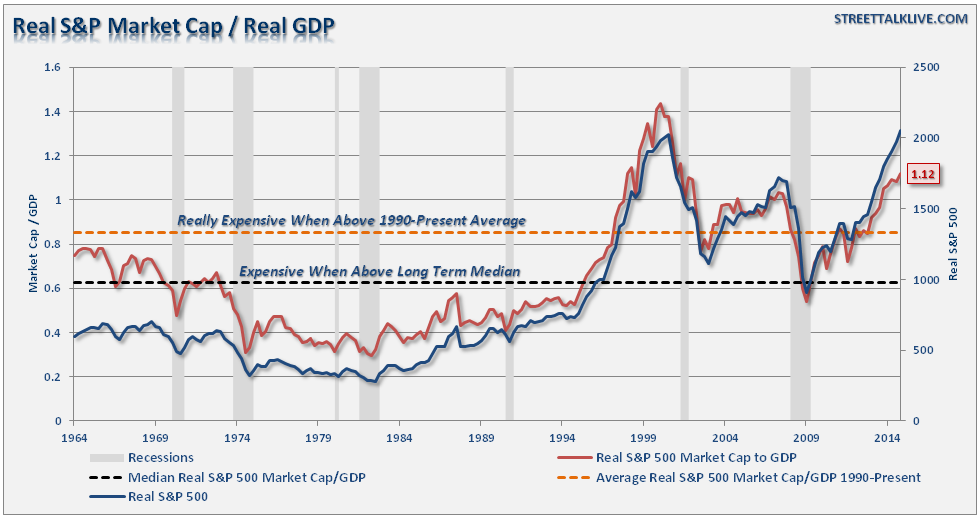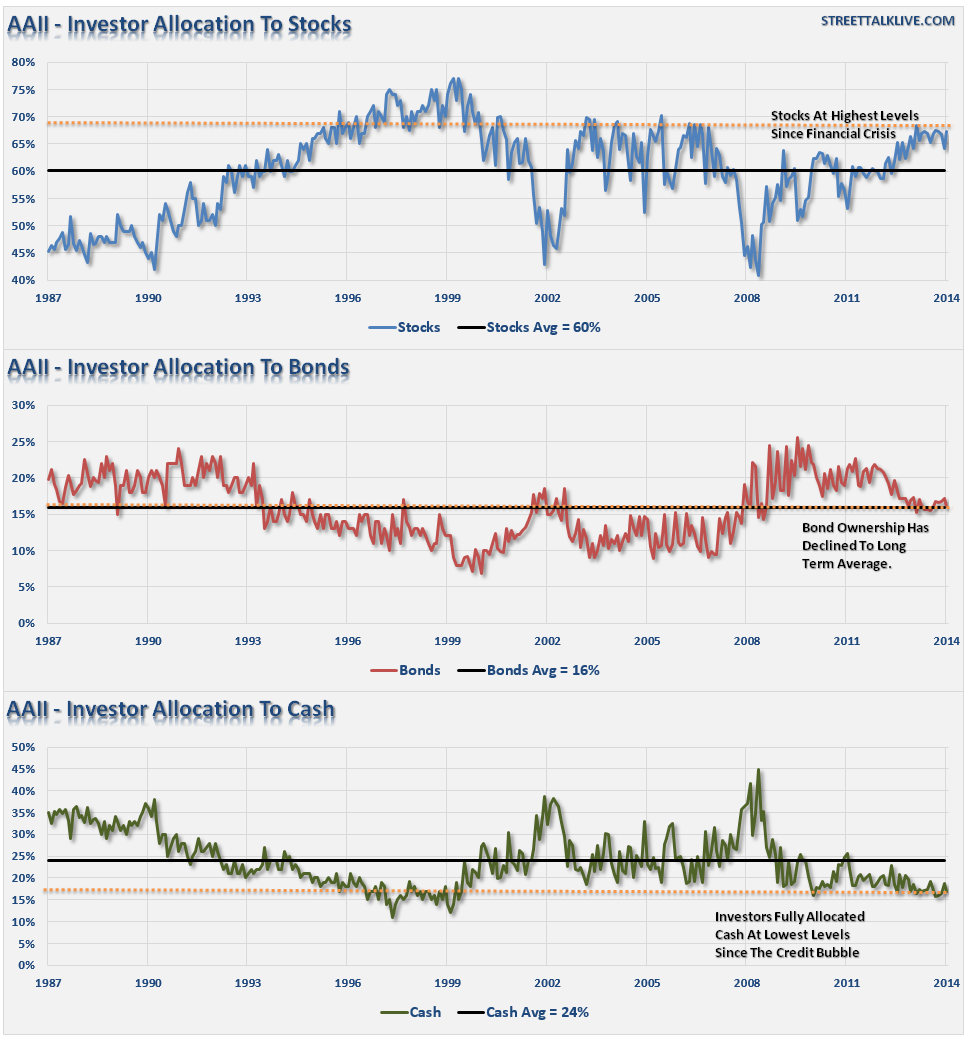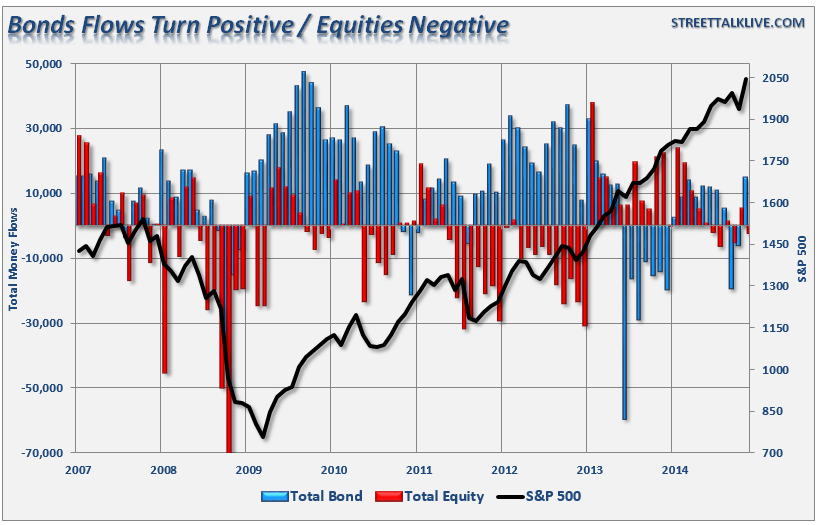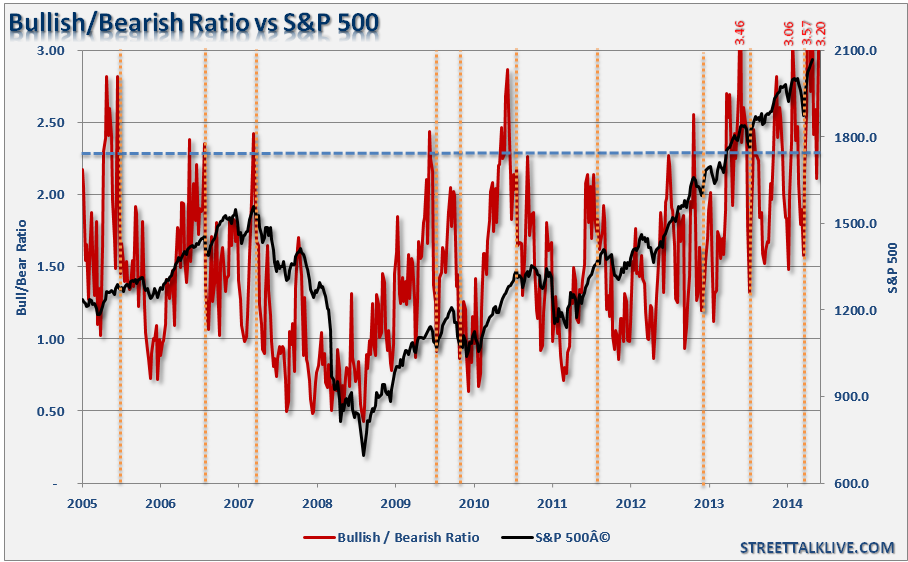As we enter 2015, analyst calls for a continued "bull market" have never been louder. There have been a litany of articles written recently discussing how the stock market is set for a continued bull rally. The are some primary points that are common threads among each of these articles which are: 1) interest rates are low, 2) corporate profitability is high, and; 3) the Fed's monetary programs continue to put a floor under stocks. The problem is that while I do not disagree with any of those points - they are all artificially influenced by outside factors. Interest rates are low because of the Federal Reserve's actions, corporate profitability is high due to accounting rule changes following the financial crisis and the Fed's liquidity program artificially inflates stock prices.
However, while the promise of a continued bull market is very enticing it is important to remember that we have only one job: "Buy Low/Sell High." It is a simple rule that is more often than not forgotten as "greed" replaces "logic." However, it is also that simple emotion of greed that tends to lead to devastating losses. Therefore, if your portfolio, and ultimately your retirement, is dependent upon the thesis of a continued bull market you should at least consider the following charts.
It is often stated that valuations are still cheap. The chart below shows Dr. Robert Shiller's cyclically adjusted P/E ratio. The problem is that current valuations only appear cheap when compared to the peak in 2000. In order to put valuations into perspective, I have capped P/E's at 25x trailing earnings as this has been the level where secular bull markets have previously ended. (I have notated the peak valuations in periods that have exceeded that level.)
The next chart is Tobin's Q Ratio. James Tobin of Yale University, Nobel laureate in economics, hypothesized that the combined market value of all the companies on the stock market should be about equal to their replacement costs. The Q ratio is calculated as the market value of a company divided by the replacement value of the firm's assets. With the exception of the "tech bubble" we are near the peak of every major bull market in history.
Lastly, one of Warren Buffet's favorite indicators, market capitalization to GDP, is also pushing levels that have exceeded all historic market peaks with the sole exception being the "Tech Bubble" in the late 90's.
All measures of valuation currently show a market trading above historical norms which suggests that the bulk of returns for investors have already been harvested. However, even with valuations currently suggesting the future returns for investors are likely to be substantially reduced, and the risk of capital loss increased, it has failed to deter investors. In fact, they are betting that one of the longest bull markets in history will continue uninterrupted indefinitely into the future.
The chart below shows the percentage of stocks, bonds and cash owned by individual investors according to the American Association of Individual Investor's survey. As you can see, equity ownership and near record low levels of cash suggest that the individual investor is "all in."
One interesting note is that despite warnings from virtually ever analyst and economist that "interest rates will rise in 2015," investors aren't buying it as they have been plowing money into bonds over the last couple of months.
Bob Farrell's rule #9 basically states that when everyone agrees; something else is bound to happen. With bullish sentiment near historic extremes, it is questionable if there is anybody NOT in the "bullish camp." The chart below of the combined bullish/bearish ratio of both individual and institutional investors is above 3.0. Not only is that an extreme level of bullishness, it is only the fourth time the ratio has traveled to level.
Of course, with investors fully committed to stocks it is not surprising to see real, inflation adjusted, margin debt as a percentage of the S&P 500 at record levels also. Importantly, with margin debt near record levels, the risk to investors is that any sudden reversion in the financial markets will be magnified as margin debt is unwound.
While it is always hoped that markets will "only go up," the reality is that this never has been the case. The problem for investors has always been that the more extreme a directional move is in the markets, the stronger the reversion tends to be. As I have shown previously, the deviation of the S&P 500 and the Wilshire 5000 from their respective 36-month moving average is at levels that have only been seen at four other periods previously. It is also important to notice what happens following these extreme deviations.
The further the deviation of prices from the long-term moving average the larger the eventual reversion will be. It is hard to suggest that the current deviation will only result in a minor correction before continuing the upward advance.
There is little doubt that the "bulls" are currently in charge of this market. Declines in global economic growth, collapses in commodity prices and little inflationary pressure have failed to deter investors whose "hopes" are pinned on continuing interventions by global Central Banks.
While the media continues to pound the table with all of the bullish arguments that should continue to drive the current advance in the markets, it is only prudent to at least attempt an understanding of the counter arguments. The "risk" to investors is not a continued rise in the financial markets, but the eventual reversion that will occur. Like Wyle E. Coyote, since most individuals only consider the "bull case," as it creates a confirmation bias to support their "greed factor", they never see the "cliff" until it is far to late.
Hopefully, these charts will give you some food for thought. Remember, every professional poker player knows how to spot a "pigeon at the table."
Make sure it isn't you.

